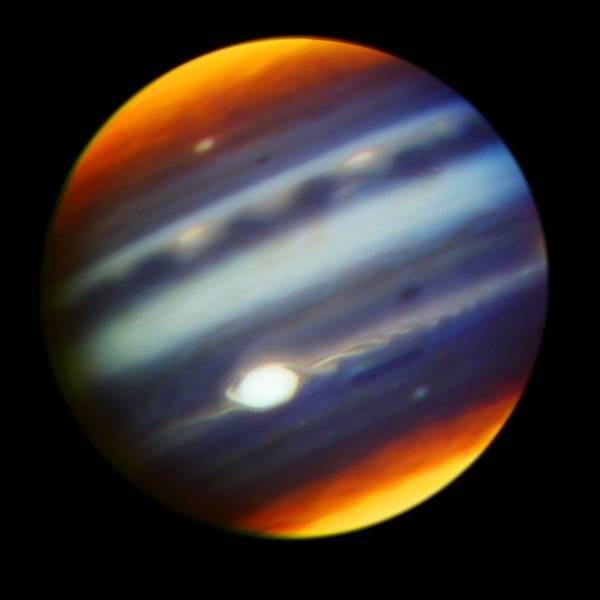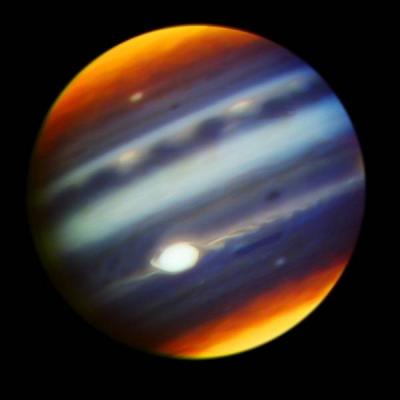At a distance from Earth exceeding an average of 700 million kilometers, a red spot on the planet Jupiter has captured the attention of scientists for a long time. In 1665, Italian astronomer Giovanni Cassini observed this phenomenon and named it the "permanent spot." A few decades later, scientists lost track of this spot for nearly a century, only to rediscover it in 1831. While it long prevailed that the "Great Red Spot" – a massive "anticyclone" – was the same observed by Cassini, a recent study from the University of the Basque Country suggests it is a different spot. Nevertheless, the "Great Red Spot" is still classified as the oldest wind vortex in the solar system.
An anticyclone is a center of high atmospheric pressure around which winds rotate clockwise in the Northern Hemisphere and counterclockwise in the Southern Hemisphere. A typical cyclone is a low-pressure area surrounded by winds rotating counterclockwise in the Northern Hemisphere. Due to the differences in atmospheric pressure values between cyclones and anticyclones, rain is usually absent in the latter.
### Wind Speeds
The "Great Red Spot" is notable for its massive size. Its diameter is larger than that of Earth. Estimates of its wind speeds vary greatly, but the differences do not negate that it is larger than anything witnessed in nature on our planet, at least since records began. The wind speeds in this spot range from 430 kilometers per hour to 680 kilometers per hour. According to other figures, it reached approximately 933 kilometers per hour.
For reference, the record for wind speed recorded on Earth was in 1996 over Australia's Barrow Island when a gust from Cyclone "Olivia" exceeded 407 kilometers per hour. This means that the wind speeds of the "Great Red Spot" could reach twice the recorded speed on Earth, noting that the anticyclone on Jupiter has persisted for at least two centuries. This is one of the mysteries associated with this spot. On Earth, cyclones rarely last more than a week. Understanding the mechanisms of the "Great Red Spot" is complex due to the nature of Jupiter. It is primarily a gas giant, unlike Earth, where land masses hinder cyclone activity. Furthermore, Jupiter is incredibly massive, being the largest in the solar system. If Jupiter were merely a hollow shell, it could accommodate about 1,000 Earth-sized planets. It also rotates very quickly, with a day lasting almost 10 hours. Clouds surrounding it obscure precise observation of its lower atmosphere.
In 2017, NASA's Juno spacecraft passed 9,000 kilometers above the clouds covering the "Great Red Spot" and revealed that the spot penetrates the atmosphere to a depth of 320 kilometers.
### Why is it Red?
Another question surrounding the Great Spot is why it appears red. This color does not always lean towards red; sometimes it seems closer to orange or even lighter. In a 2014 study by NASA’s Jet Propulsion Laboratory, it is likely that the red color exists only on the outer surface of the clouds surrounding the cyclone, while the color of the lower clouds may be closer to white or gray. Instead of being caused by chemicals rising from lower regions towards the atmosphere, as some prevailing theories suggest, the study proposed that it could be due to the breakdown of chemicals by ultraviolet light coming from the sun.
Alongside this spot, there is a smaller spot known as "Red Spot Junior," formed from merging storms in 1998 and also turned red in 2006. Previously, this spot was known as the "White Oval." The smaller spot passes near the larger one approximately every two years.
### What Does the Recent Study Say?
According to the study from the University of the Basque Country published in Geophysical Research Letters on June 16, researchers found that when comparing early drawings of the spot (from 1665 and 1713) with more recent images, the diameter of the spot would have to have grown by about 160 kilometers per year between 1713 and 1879 to be the same two spots. However, no cyclone on Jupiter has grown at this speed, and the anticyclone appears to be shrinking, as some research suggests. In the late 1970s, the red spot could have encompassed three Earth-sized planets, while today it is only slightly larger than Earth. In other words, it still has the capability to engulf our planet.
However, another study from 2019 by the University of California, Berkeley, suggests that what is actually shrinking is the size of the clouds, not the anticyclone itself. Scott Bolton from the Southwest Research Institute in Texas believes that this atmospheric pressure system is the same as that observed in the seventeenth century, but it is evolving over time. Bolton, who has studied Mars for an extended period during the Juno mission, noted that it would require an immense coincidence for scientists to study the same phenomenon at the same latitude or even a nearby latitude.
In any case, researchers will continue to conduct further studies to determine whether the Great Spot will last for years to come or if




